In pictures: Solar eclipse
- Published
People across the UK and northern Europe have gathered to see the best solar eclipse in years. A path across the Earth's surface was plunged into darkness when the Moon covered up the Sun.
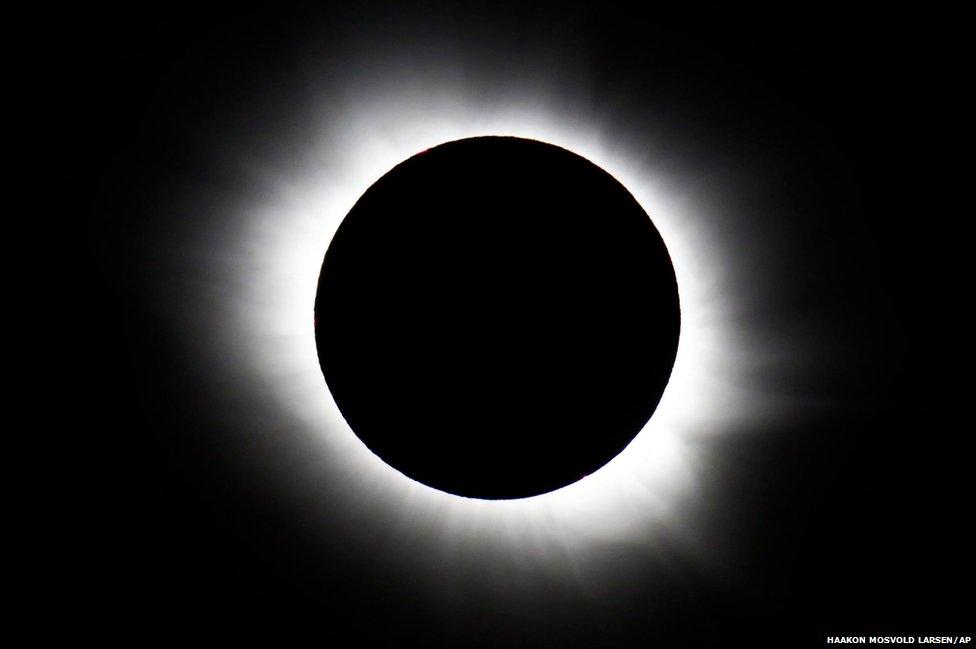
The Faroe Islands and Svalbard in the Arctic Circle were the only places to experience a total eclipse.
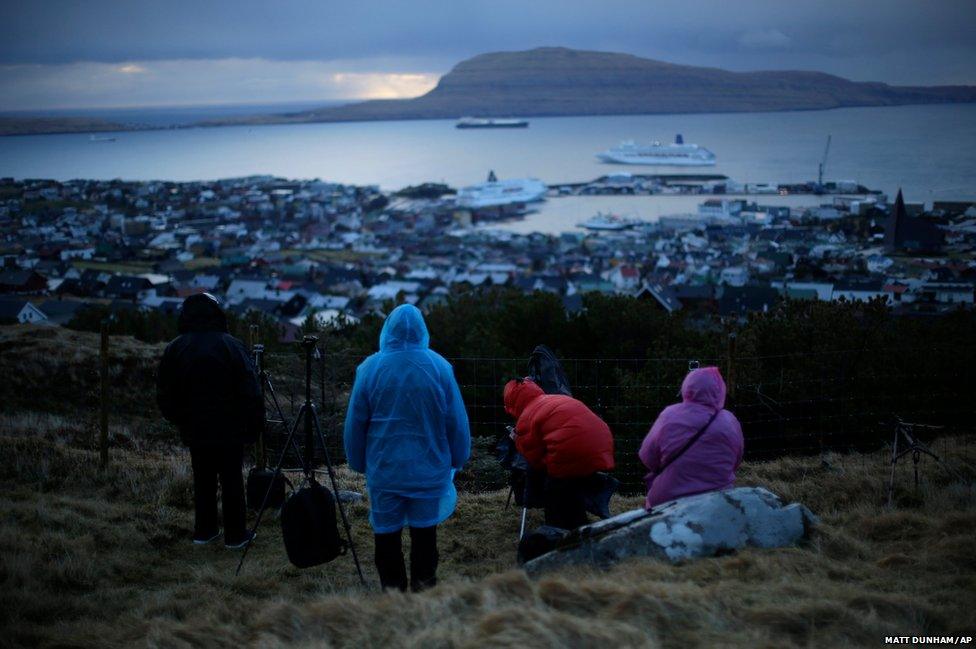
People gathered for the start of a total solar eclipse in Torshavn in the Faroe Islands. Hotels in the area had been fully booked for months. Stargazers in the town got totality for a full two minutes, which started just before 09:41 GMT.
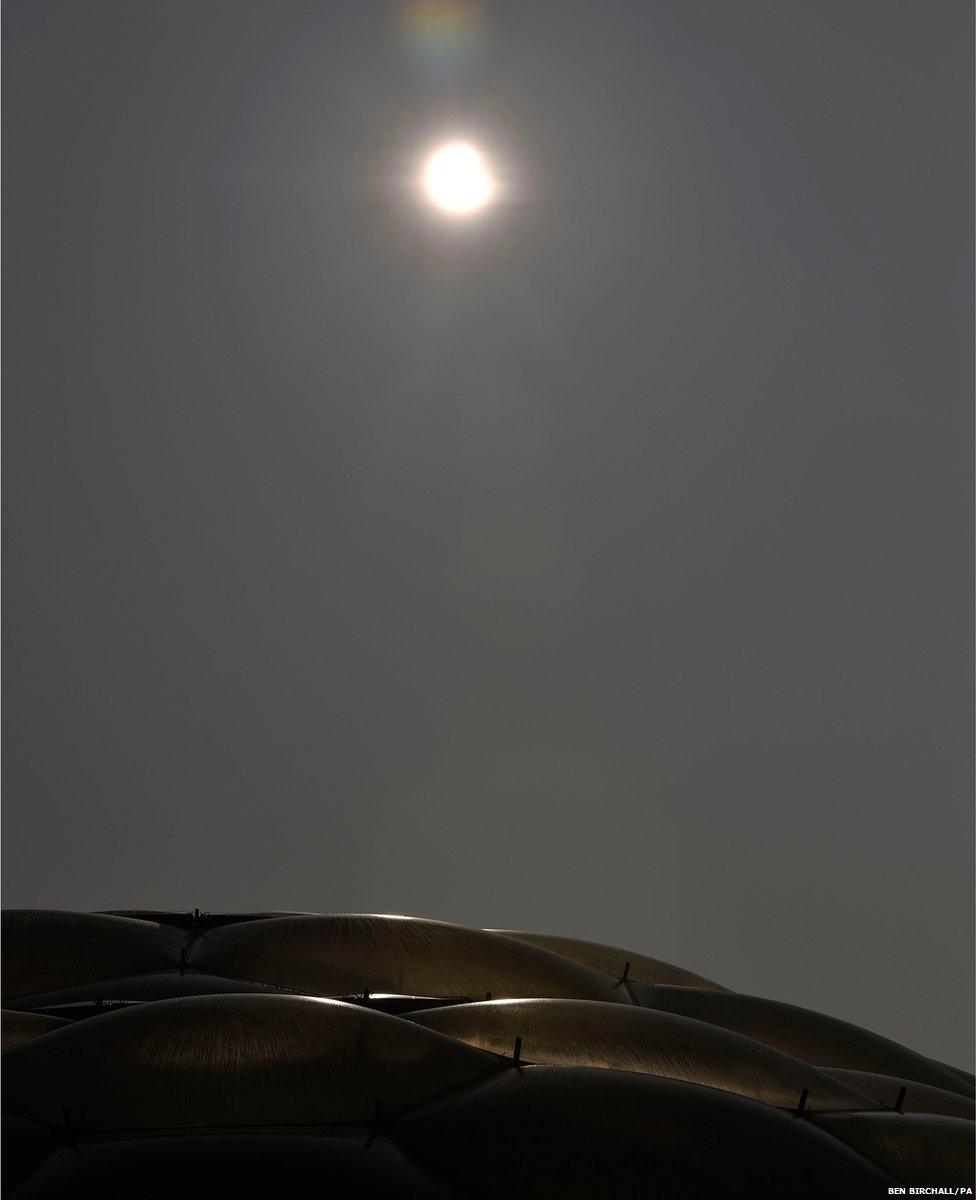
Early signs of the eclipse were seen over the domes of the Eden Project near St Austell in Cornwall.
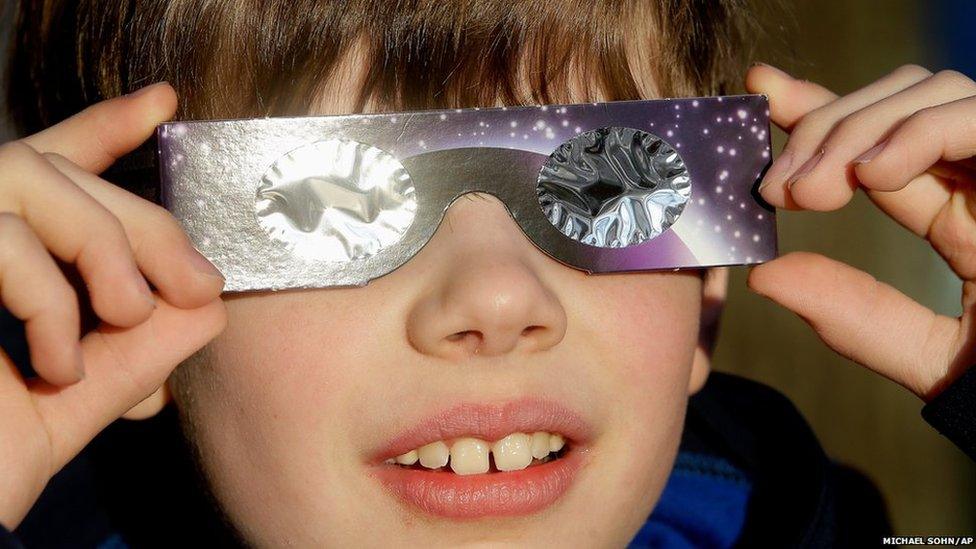
Experts warned people not to look directly at the Sun because it could cause serious harm. Here a boy poses for a photograph wearing protective goggles in Berlin, Germany.
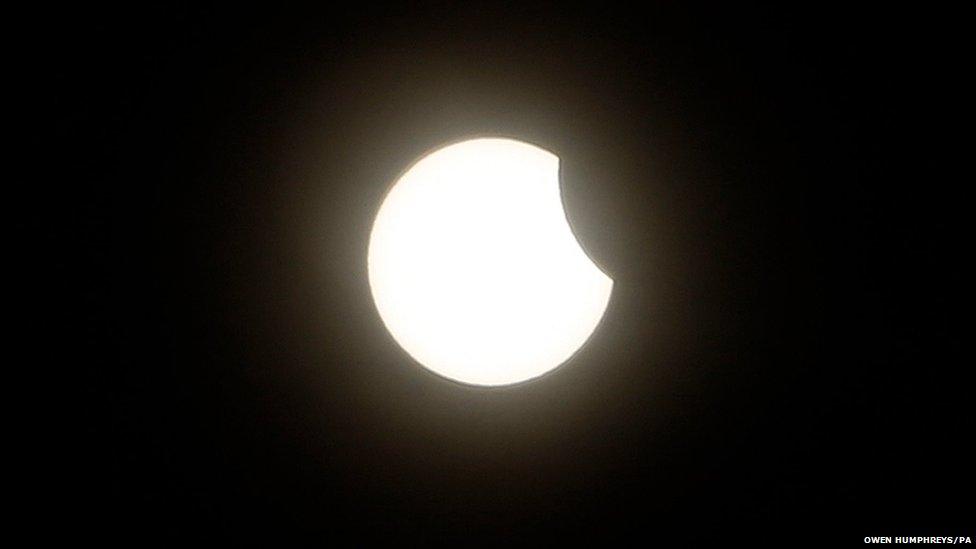
The UK will not see a solar eclipse on this scale again until 2026.
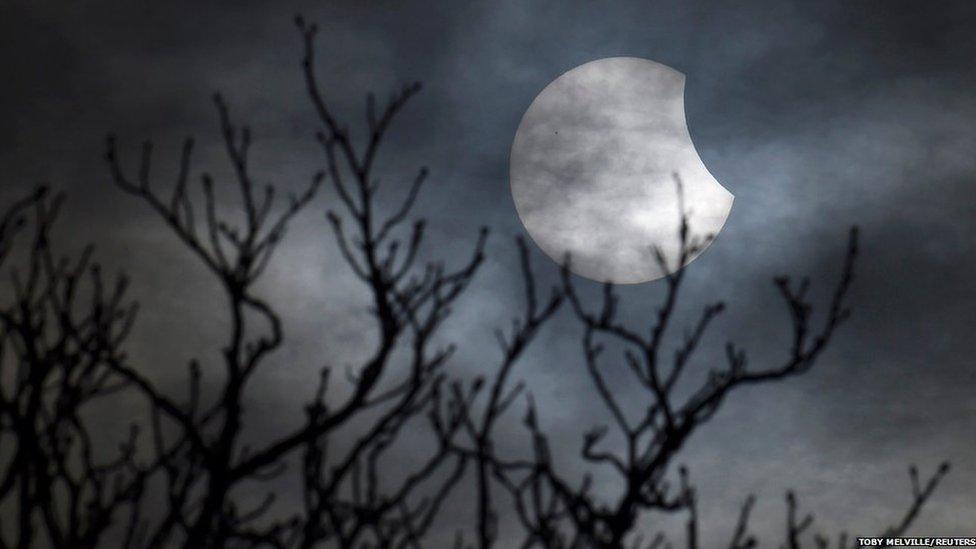
Despite some cloud, photographer Toby Melville captured this frame near Bridgwater in south west England.
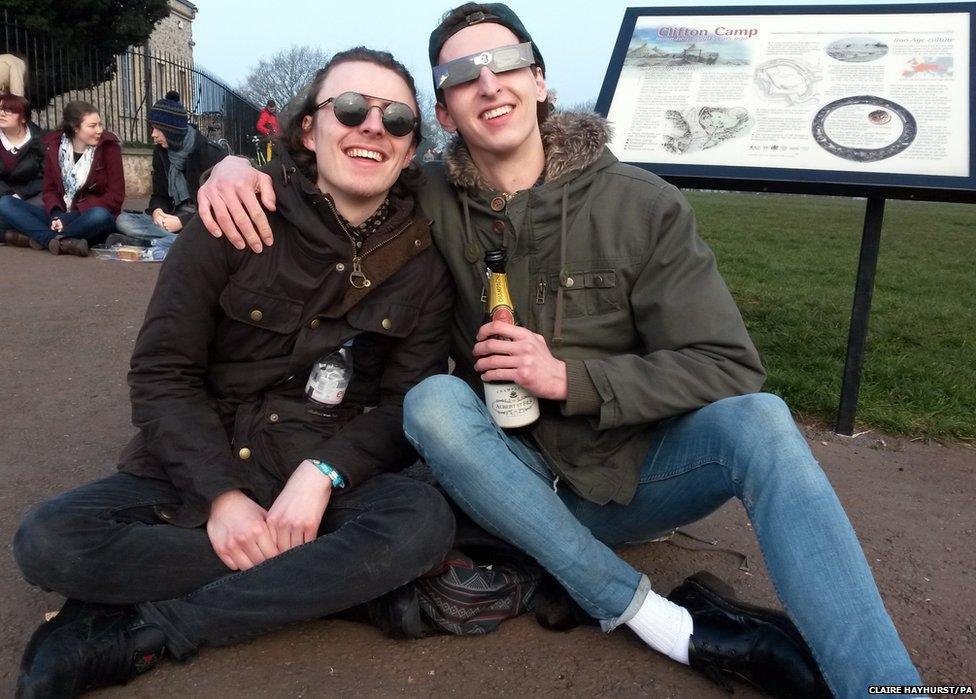
Students Greg Robertson and Sam Firminger waited for the eclipse at Clifton Observatory in Bristol.
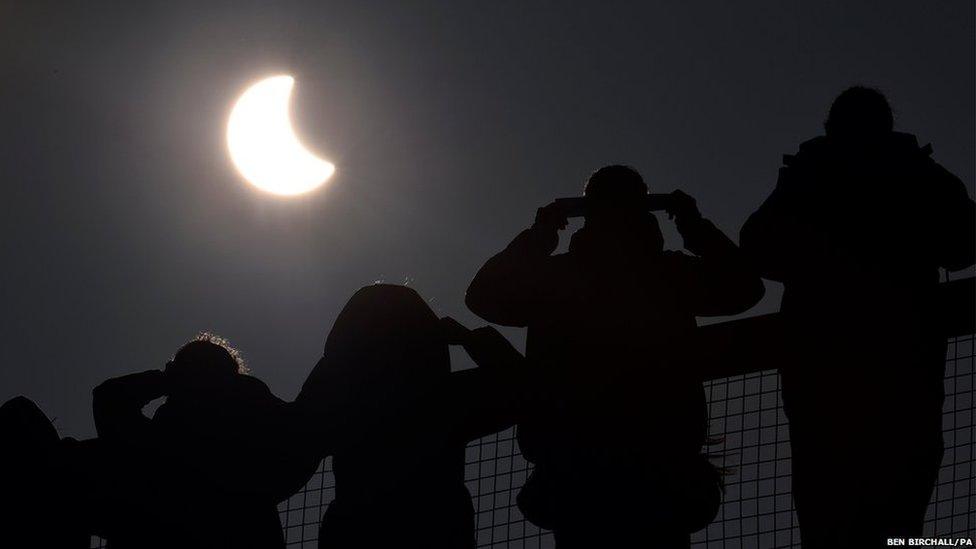
Total eclipses occur, on average, every 18 months somewhere on our planet.
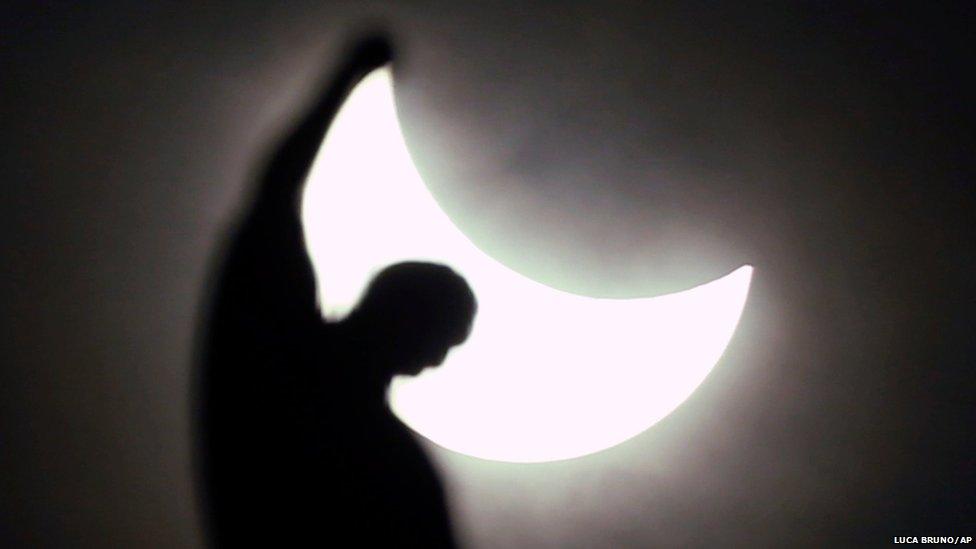
A statue on top of Milan's cathedral in Italy was photographed as though embracing the Sun.
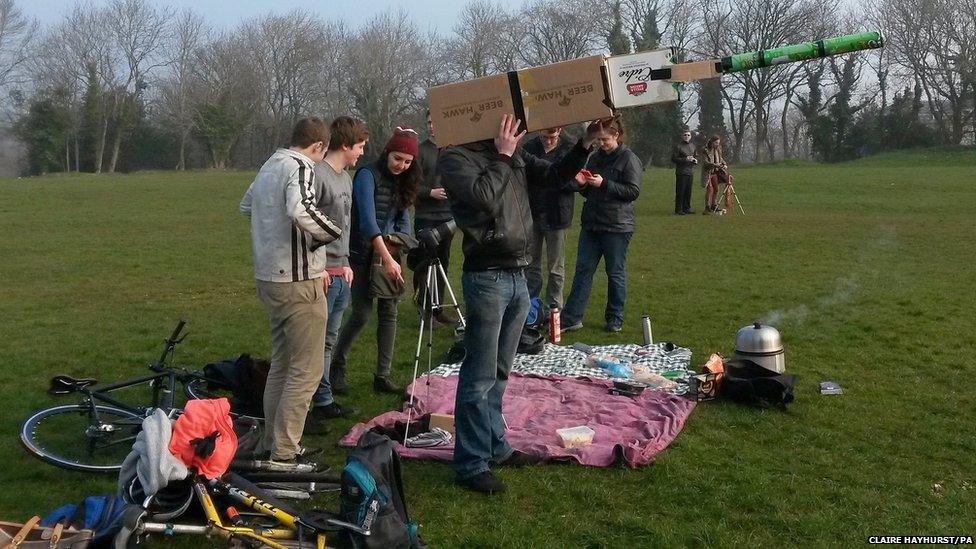
A homemade pin hole camera was spotted at Clifton Observatory in Bristol.
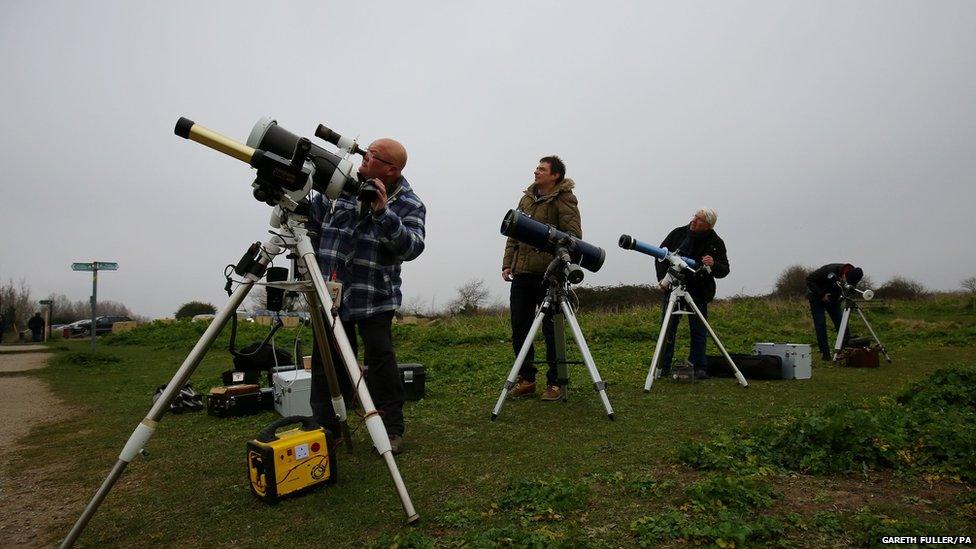
Members of the Mid Kent Astronomical Society hoped for a glimpse of the eclipse on the coast in Grain.
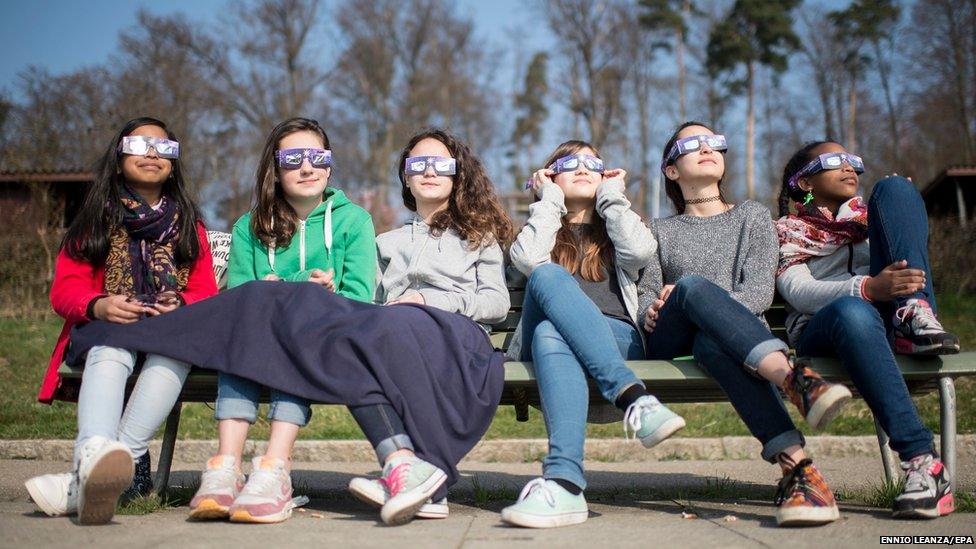
Teenagers waited to watch the spectacle of a partial solar eclipse in Zurich, Switzerland
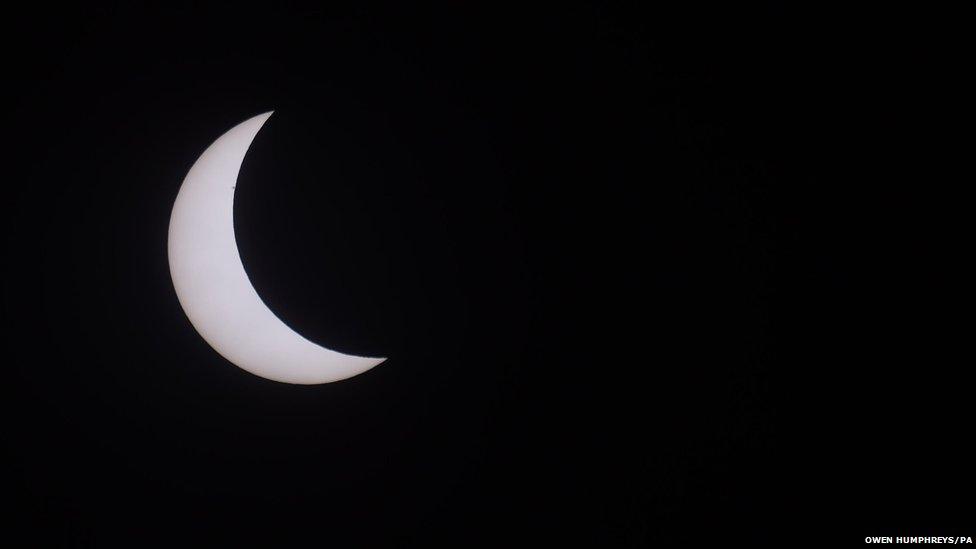
Today's eclipse marked the last total solar eclipse in Europe for over a decade. The next one will appear on 12 August 2026.
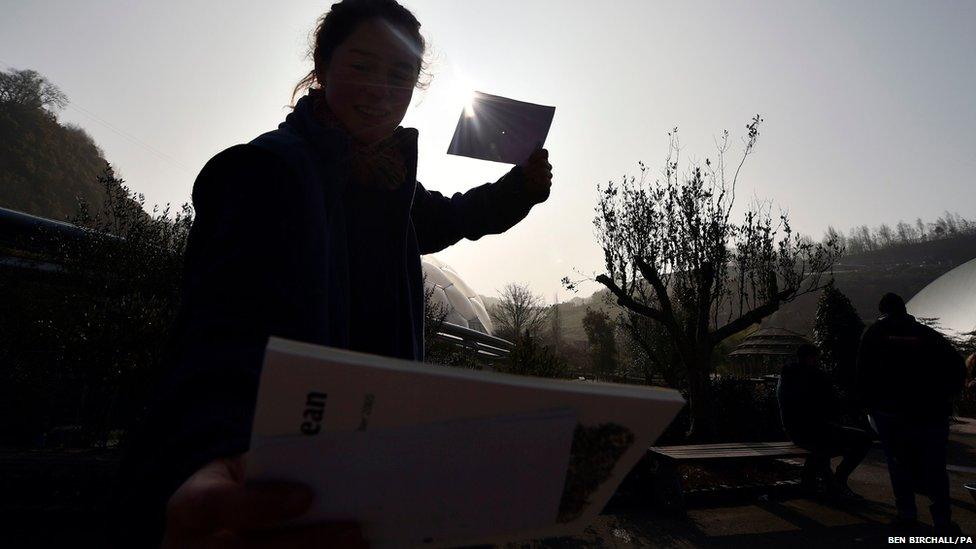
A woman used a piece of card with a pinhole in the centre to view the eclipse safely.
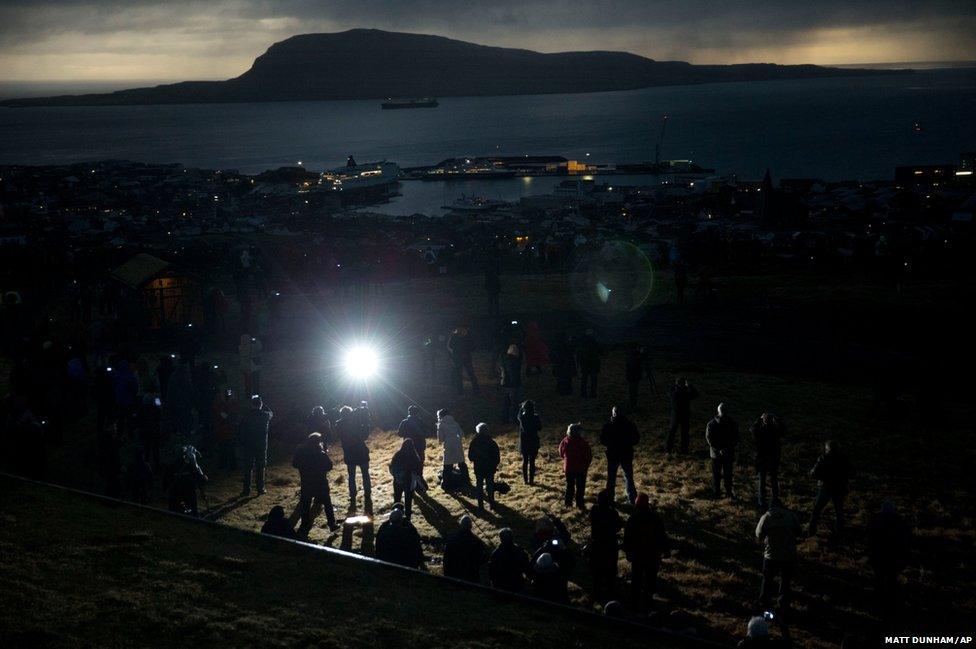
Apart from a television light people watched in darkness during totality in Torshavn in the Faroe Islands.
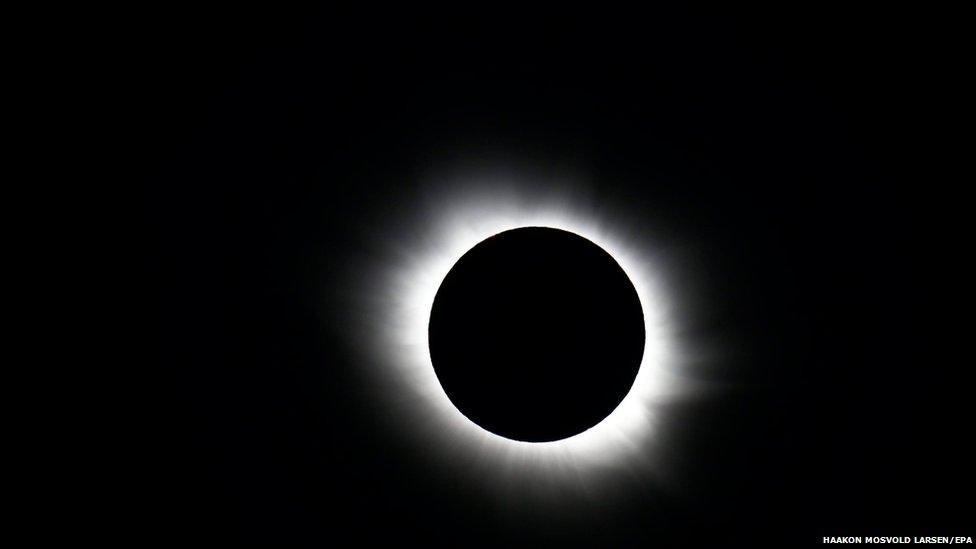
The total solar eclipse as seen at Svalbard in Norway.
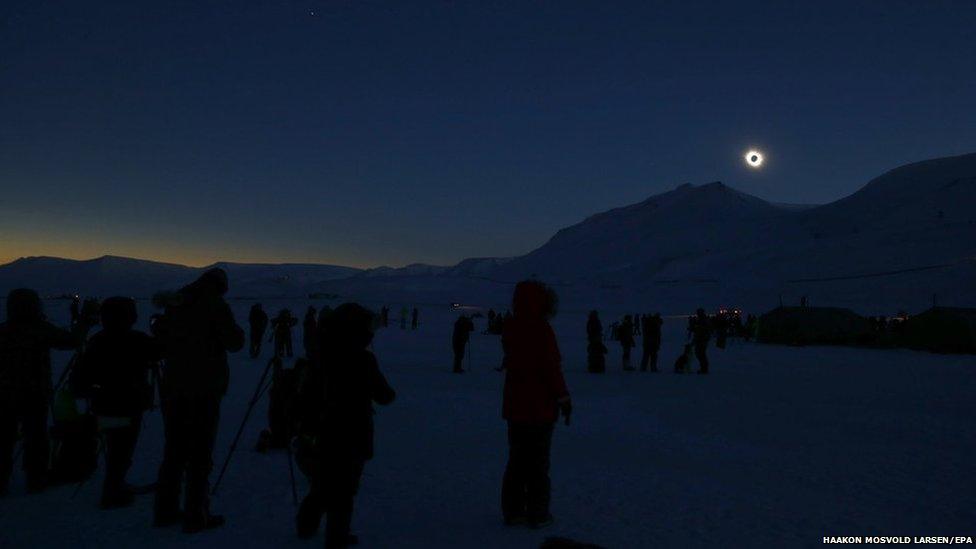
The last major eclipse was back in 1999 which is why everyone was so keen to catch a glimpse of Friday's event.